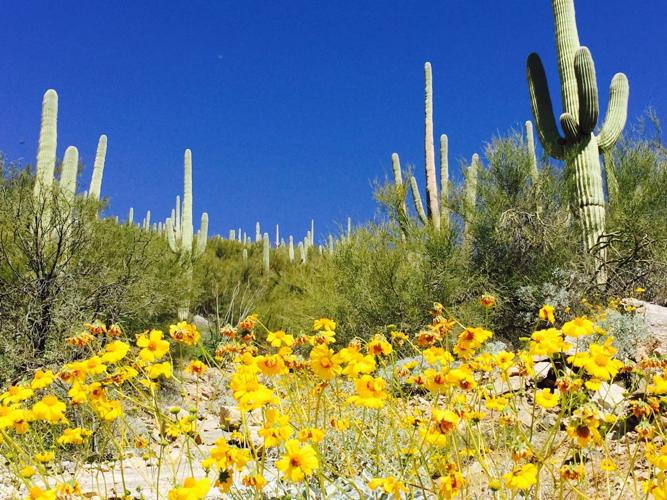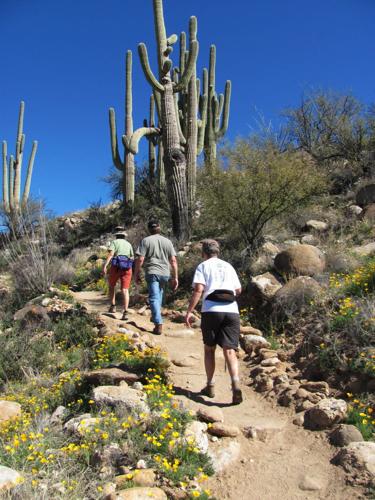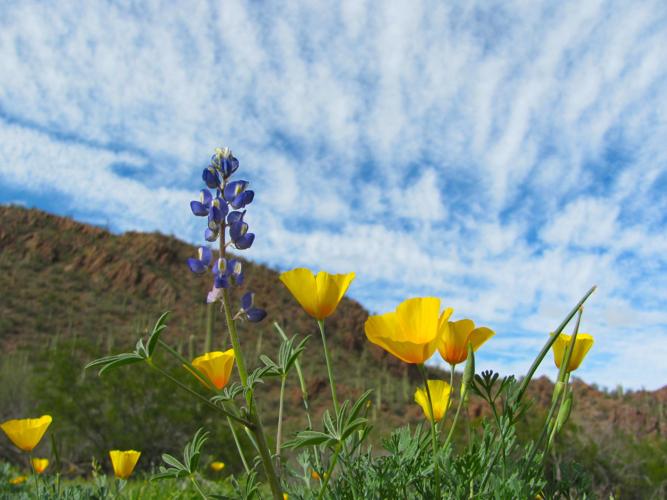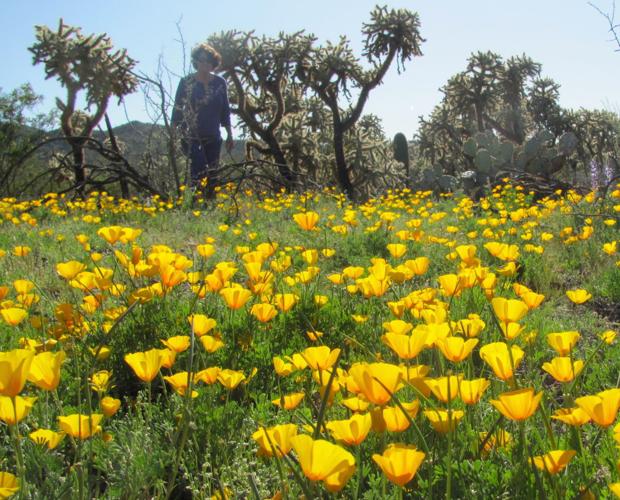The ways of wildflowers are never certain, but experts say deserts around Tucson could burst into beautiful bloom in late winter and spring — especially with a boost from additional rains.
Some areas “had a good soaker in late December and the ground is turning green with seedlings,” said Mark Dimmitt, a wildflower expert and retired director of natural history at the Arizona-Sonora Desert Museum.
“Normally December is too late to start a good wildflower bloom, but it has happened if the winter was very warm,” Dimmitt said. “So far that’s been the case, so if it holds and we get another couple of good rains, we could have a good flowering of spring annuals. I think that most of the perennials have had enough rain to ensure a good bloom in the Tucson Mountains.”
Meg Quinn, author of “Wildflowers of the Desert Southwest,” predicted that the bloom could be “average or good in some areas.”
“I’ve seen a surprising number of annuals germinating on the Sweetwater Preserve trails on the east side of the Tucson Mountains,” Quinn said.
Others, including Erik Rakestraw, a horticulturist at the Desert Museum, noted that the wildflower bloom is “pretty unpredictable” and that it’s “a little early to tell.”
“However, that being said, the herbaceous perennials and small shrubs will probably bloom,” Rakestraw said. “It will probably be a good year for brittlebush and fairy dusters.”
FIND SOME BLOOMS
Don’t expect to see more than a few scattered wildflowers until February and March.
Once the bloom takes shape in late winter and spring, here are some spots where you’re likely to find some displays of gold poppies, lupines, penstemons, phacelias, fairy dusters and other species.
- Saguaro National Park West: Splendid displays of gold poppies and other blooms are often visible just south of Picture Rocks Road in the northeastern part of the park. Take Ina Road west of Interstate 10 to Wade Road. Turn south on Wade and follow it as it turns into Picture Rocks Road and continues to the park. Watch for flowers at the bottom of a hill less than a mile into the park.
- Catalina State Park: Poppies usually bloom along the main road in the park north of Tucson, and hikers often report abundant blooms a little more than a mile up the park’s Sutherland Trail.
- The Catalina Highway: Watch for poppies, blue phacelias, fairy dusters and other flowers along the first mile of the highway northeast of Tucson. Flowers also commonly bloom near the Babad Do’ag Vista and trailhead at the 2.6-mile point on the road.
- Picacho Peak State Park: The park, along Interstate 10 northwest of Tucson, is known for excellent displays of poppies and other wildflowers in years of abundant blooms.










